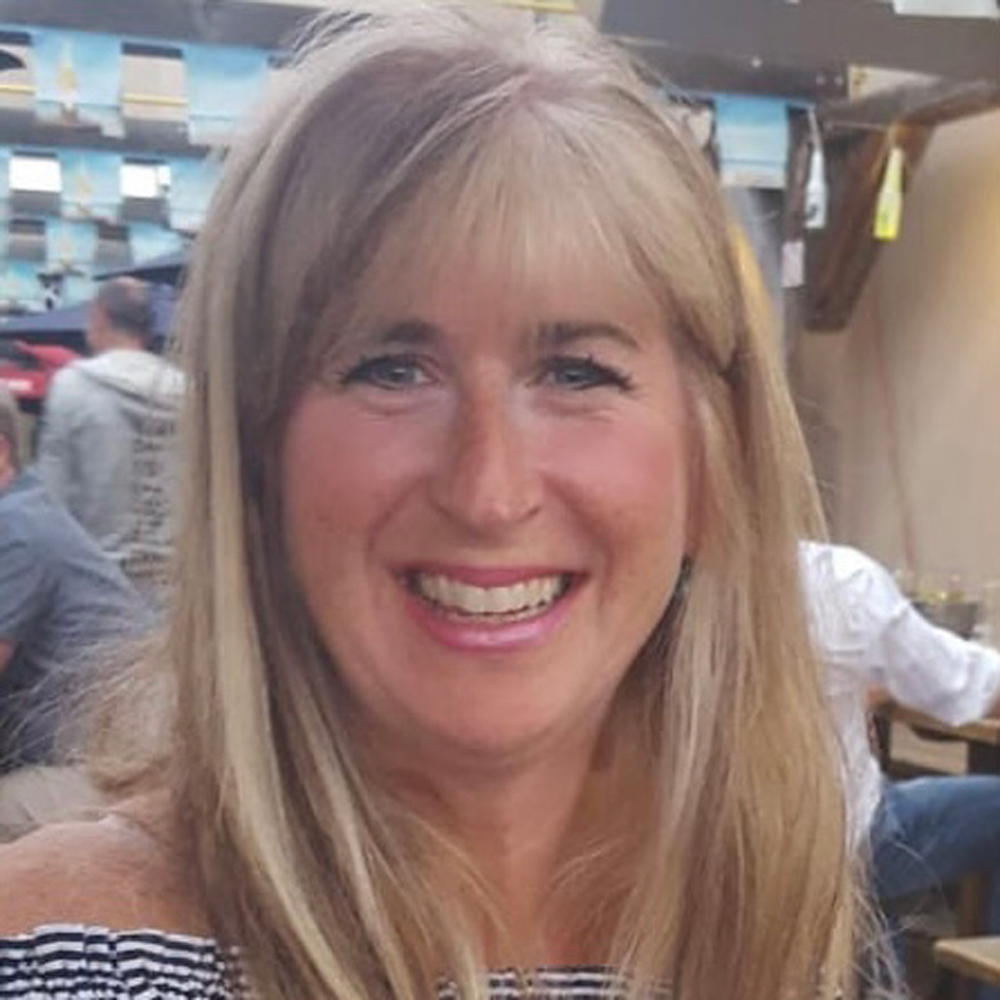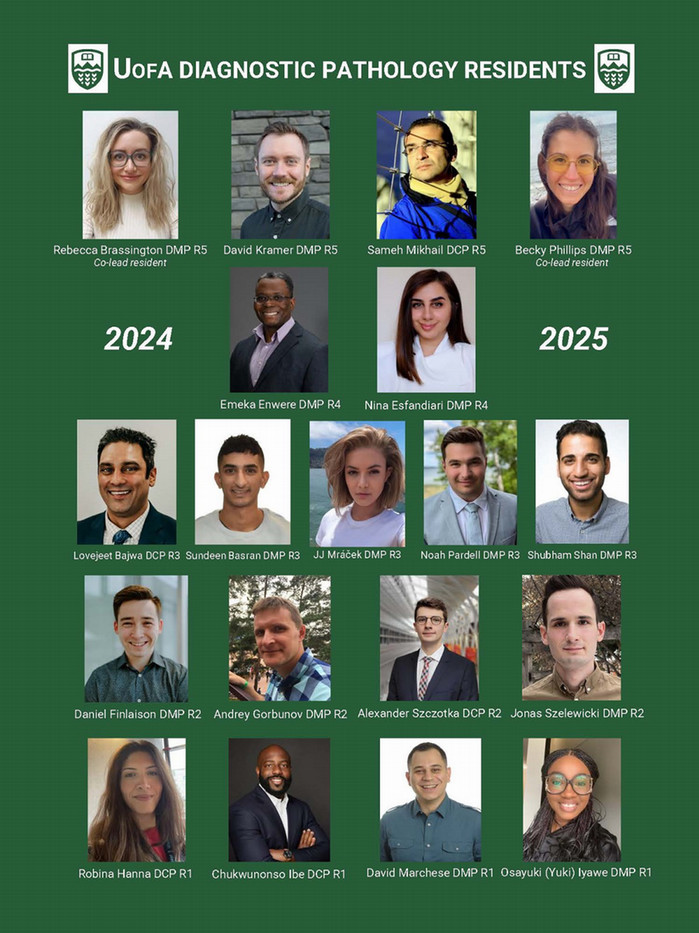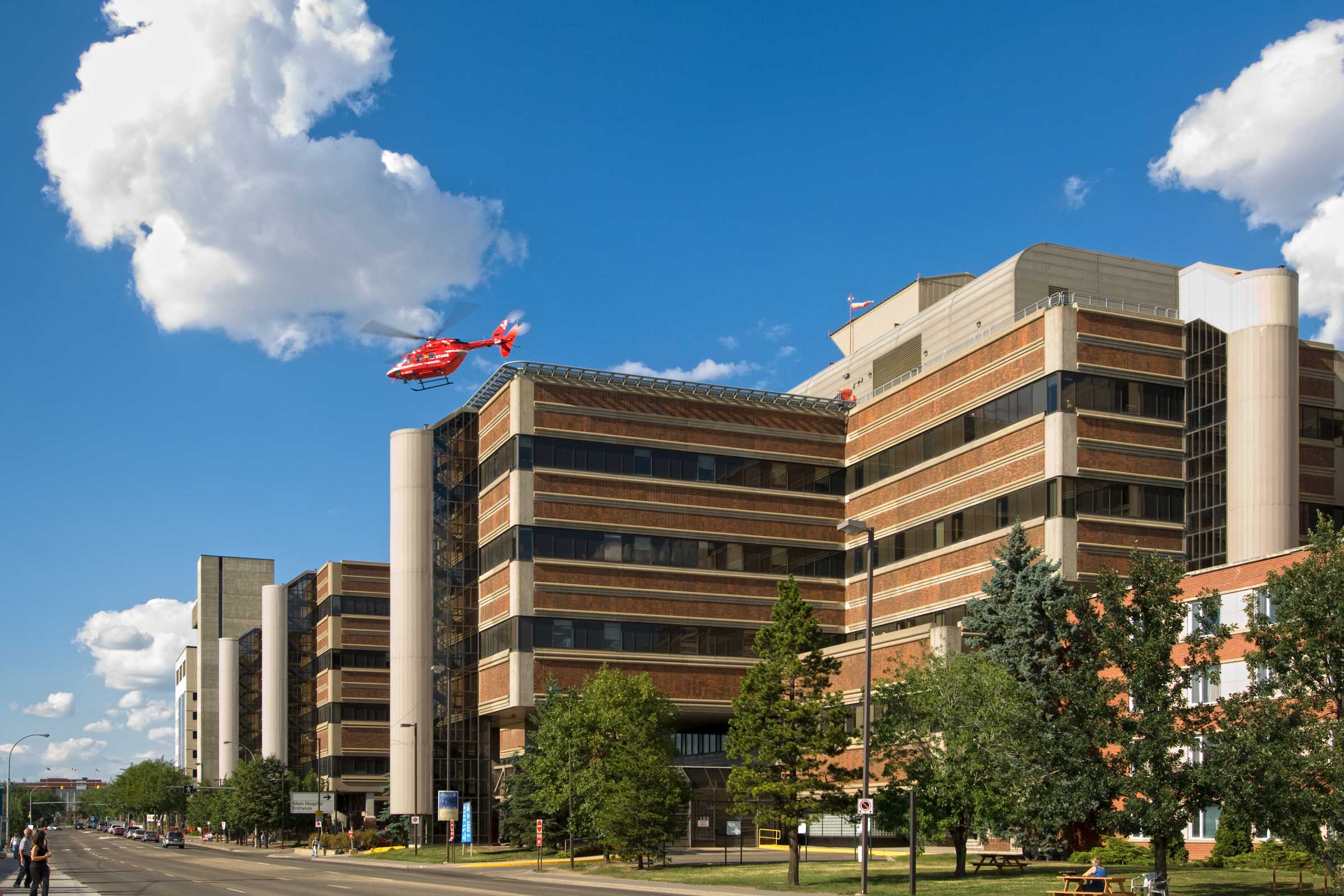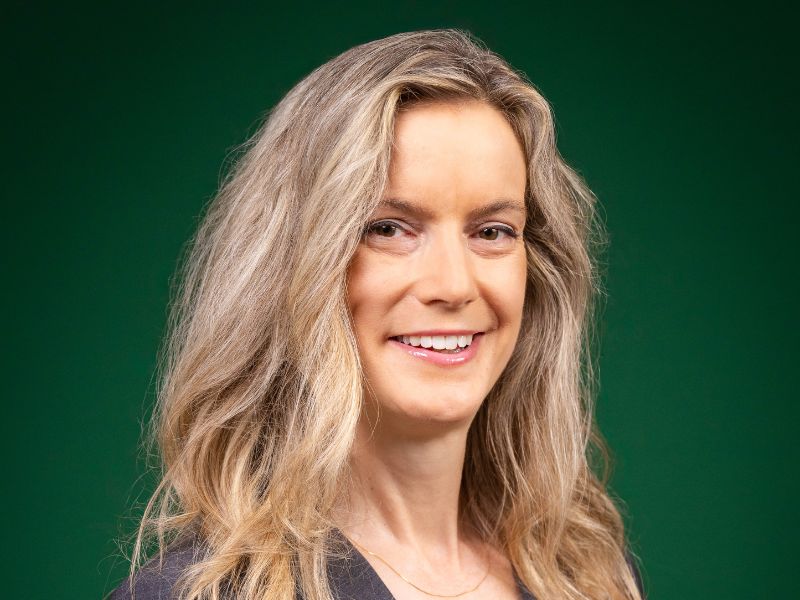Diagnostic & Clinical Pathology (formerly General Pathology) Residency Program
Welcome to the Diagnostic & Clinical Pathology (formerly General Pathology) Residency Program at the University of Alberta.
WELL-ROUNDED
STRONG TEACHING AND LEARNING RESOURCES IN ALL AREAS OF LABORATORY MEDICINE
COLLABORATIVE
STRONG RELATIONSHIPS WITH OTHER LABORATORY MEDICINE RESIDENCY AND FELLOWSHIP PROGRAMS, MEDICAL LABORATORY TECHNOLOGIST PROGRAM, AND OTHERS
EXPERIENCED
LONG HISTORY OF TRAINING IN DIAGNOSTIC AND CLINICAL PATHOLOGY IN EDMONTON WITH COMMITTED TEACHING FACULTY
Interview/CaRMS Specific Information
Candidates will be interviewed via Zoom by a panel comprised of the residency program director, program administrator, faculty members involved in residency training and one or more residents. The Diagnostic & Clinical Pathology interviews are held in tandem with the Diagnostic & Molecular Pathology interviews.Contact Us
Dr. Laura Canterbury
Program Director, Diagnostic & Clinical Pathology
Ms. Kathryn Tomlinson
Program Administrator
Phone: 780-407-2606
Fax: 780-407-7660
Email: katomlin@ualberta.ca
Dr. Laura Canterbury
Program Director

Kathryn Tomlinson
Program Administrator
Welcome to our Program
Welcome to the Diagnostic & Clinical Pathology (formerly General Pathology) residency training program at the University of Alberta!
The goal of the program is to train highly competent pathologists who will be equipped to pursue careers in whatever setting of laboratory medicine they choose to work. The program will also prepare pathologists to make substantial contributions to their communities as experts in laboratory medicine, leaders, teachers and collaborators among their colleagues — both inside and outside the laboratory setting.
The program aims to deliver high-quality training across all laboratory medicine disciplines and exposure to a wide variety of laboratory environments.
As a generalist specialty, diagnostic and clinical pathology exists in a diversity of environments, which means your practice will vary greatly depending on your geographic location and type of facility. The available technologies and test menus will vary, as will the number and training of other staff within the laboratory, and the clinical physicians and other healthcare providers receiving the laboratory results.
It is our goal to equip graduates of the program with the ability to pursue their individual goals and interests and to meet the needs of the public, whatever community graduates find themselves in, be it large or small.
Dr. Laura Canterbury
Program Director
Our Program
This is a comprehensive program providing experiences in all facets of laboratory services in a variety of settings, from rural to tertiary-care facilities, including community hospitals and a high volume out-patient laboratory.

Program Highlights

This is a comprehensive program providing experiences in all facets of laboratory services in a variety of settings, from rural to tertiary-care facilities, including community hospitals and a high-volume outpatient practice.

There are no mandatory rural rotations, but residents can and have undertaken rural laboratory electives. In addition, residents participate in a longitudinal rural laboratory management rotation in which each resident is paired with a rural site for which the resident acts as consultant, along with their supervisor.

There is a strong cooperative relationship between the laboratory medicine training programs at the University of Alberta, with a long history of sharing of resources and expertise. Besides the five FRCPC programs, there are longstanding links with the undergraduate MD and Medical Laboratory Science programs; more recently, a Pathology Assistant program and Clinical Biochemistry Fellowship have been added. These relationships allow pathology residents to interact with, teach, and learn from their future colleagues.

Research is actively encouraged. All residents are expected to participate in at least one clinical or basic science project, and to present their results at an annual departmental research day and, when appropriate, at a national or international meeting during the course of their training.
Program Supports
Continuous assessment/feedback as part of the Competency By Design curriculum.
Academic Advisor assigned to each resident to help guide their journey.
Residency Wellbeing Committee.
The Office of Advocacy & Wellness (OAW) is an excellent resource to obtain confidential counseling; they also advocate on behalf of residents in a variety of matters.
Alberta Medical Association’s Physician and Family Support Program (PFSP) for confidential support, open 24/7.
Residency at a Glance
In CBD, the previous structure which divided the programs into PGY years will instead be replaced by the following 4 stages. The overall length of the program is expected to be 5 years for most residents.
Includes basic skills and concepts not necessarily covered in medical school, including laboratory safety, microscopy skills, principles of specimen handling and workflow in the laboratory, and basics of laboratory testing.
- Includes rotations in relevant clinical specialties (Infectious Diseases, Hematology, Medical Oncology, Surgery, Radiology, etc.) and exposure to selected procedures such as fine-needle aspiration and bone marrow biopsy.
- Experiences in normal histology/morphology, frozen section, autopsy, and grossing of simple specimens are also included, as are experiences in the biochemistry, hematopathology (including transfusion medicine) and microbiology laboratories.
- Rotations in anatomic pathology (including selected subspecialty areas such as neuropathology, cytopathology, etc.) and,
- Rotations in the three clinical pathology areas: biochemistry, hematopathology and microbiology, with exposure to and benchwork in the various subdisciplines of each.
- Trainees will continue to acquire skills and knowledge to become effective and knowledgeable laboratory consultants, not only regarding histology/morphology and the generation of accurate and comprehensive laboratory reports, but also regarding laboratory management.
In this stage, trainees consolidate their skills to work independently and demonstrate leadership in rounds, teaching and other activities.
Teaching Hospitals
We are a fully accredited program that follows the guidelines set out by the Royal College of Physicians and Surgeons of Canada. Our residents will be learning at multiple locations.
University of Alberta Hospital
Misericordia Community Hospital
Alberta Precision Laboratories, Baselab: #200, 10150 - 102 Street, Edmonton, AB, T5J 5E2
The residency programs are based in the hospital and community laboratories of the former Capital Health Region, now part of Alberta Health Services. In addition to a service base of over one million population in Edmonton and the surrounding communities, specialized clinical programs in the region attract patients from across western and northern Canada.
The high volume of specimens and variety of specimen types is key to being able to provide well-rounded training in all areas of laboratory medicine. Elective experiences are available in a variety of community hospitals. The Edmonton zone also provides pathologist support for a number of rural hospitals in the northern half of the province, and experience in acting as a regional consultant is built into the program. This combination provides resources for training in general as well as subspecialty areas.

Frequently Asked Questions
-
The opportunity to understand the nature of disease in an in-depth way that isn’t achieved in any other specialty. You get to practice scientific diagnostic medicine over a broad range of subjects and you have a fair degree of control over your schedule. You are very much a part of the team taking care of the patient (it just isn’t as obvious!), and this is becoming even more apparent in the era of precision medicine.
-
Although there is limited direct contact with patients, there is a great deal of contact with a variety of clinicians outside the laboratory as well as with physician, PhD, and technical staff colleagues within the laboratory. We get satisfaction from the interactions we have with others, and knowing that we are helping a clinician take the next step in diagnosing or treating a patient. The stereotypical image of the hermit-like pathologist who stays in their office and never talks to anyone is rapidly disappearing in today’s pathology practice.
- There is limited direct clinical contact – you’ll never have an office full of patients who regard you as their doctor and most pathologists have a hospital-based practice which can limit professional autonomy.
- You often have to sit/stand at a microscope and/or computer a lot, so sometimes you need to get creative about staying active during the day.
Potential breadth of practice. Although it is true that a pathologist who actively practices in all 4 areas (anatomic pathology, hematopathology, medical biochemistry, and medical microbiology) is very rare today, having that broad-based training is perennially useful and also situates you well for leadership roles within the laboratory.
The entire gamut of clinical problems has a counterpart in pathology. You can practice as a subspecialist or as a generalist depending on your interest and on the needs of your practice environment.
Depends upon the setting. Pathologists are involved in rounds, laboratory supervision, and direct diagnostic work in biopsies, surgical pathology, hematology, autopsies, etc. Academics do academic things; community-based pathologists often have major roles in their institutions/medical staff organizations. Some pathologists do procedures such as fine-needle aspiration and bone marrow aspiration and biopsy procurement. Evening and weekend call is variable and in many settings is light compared with many other specialties. Call is always taken from home and usually the problems can be solved over the phone or by a brief hospital visit.
It is possible to do pathology and do it well and still have a life outside medicine. Most pathologists work regular office hours and work quite hard during the day, but don’t haunt the hospitals at night!
Relatively easily. Working hours are regular for pathologists and there is usually enough flexibility to deal with life’s other demands as you need to. As described, call is variable in terms of how busy it is, but even during a busier call week our family still sees us!
In Alberta, pathologists are paid on a standard grid, depending on experience, and are well-remunerated. Pathologists do have our own specific overhead costs, but generally do not have the kind of overhead required by maintaining your own clinic or office.
While morphology will remain the mainstay of diagnosis in anatomic pathology for the foreseeable future, there will be increasing usage of molecular techniques for both diagnosis, prognostic determination and treatment responses. Gene and cell therapy are also new frontiers that have much hope for improving treatment outcomes in a wide variety of conditions. These will be exciting changes.
Residency Program Questions
Someone who is hard-working, self-motivated, able to function as part of a team, and who is passionate about understanding the nature of disease and contributing to patient care. Communication skills are of prime importance given the nature of our work.
Acquire a sound foundation of medical knowledge, develop excellent communication skills both with patients and other medical colleagues, and do electives in laboratory medicine to see if this is the right choice for you. Research activities, whether basic (bench) or applied, are encouraged.
Diagnostic and clinical pathology has launched Competence By Design in 2019! In CBD, the previous structure which divided the programs into PGY years will instead be replaced by the following 4 stages. The overall length of the program is expected to be 5 years for most residents.
1) Transition to Discipline
- Includes basic skills and concepts not necessarily covered in medical school, including laboratory safety, microscopy skills, principles of specimen handling and workflow in the laboratory, and basics of laboratory testing.
2) Foundations of Discipline
- Includes rotations in relevant clinical specialties (Infectious Diseases, Hematology, Medical Oncology, Surgery, Radiology, etc.) and exposure to selected procedures such as fine-needle aspiration and bone marrow biopsy.
- Experiences in normal histology/morphology, frozen section, autopsy, and grossing of simple specimens are also included, as are experiences in the biochemistry, hematopathology (including transfusion medicine) and microbiology laboratories.
3) Core of Discipline
- This stage comprises the bulk of the program (at least three years) and includes: - Rotations in anatomic pathology (including selected subspecialty areas such as neuropathology, cytopathology, etc.) and,
- Rotations in the three clinical pathology areas: biochemistry, hematopathology and microbiology, with exposure to and benchwork in the various subdisciplines of each.
- Trainees will continue to acquire skills and knowledge to become effective and knowledgeable laboratory consultants, not only regarding histology/morphology and the generation of accurate and comprehensive laboratory reports, but also regarding laboratory management.
4) Transition to Practice
- In this stage, trainees consolidate their skills to work independently and demonstrate leadership in rounds, teaching and other activities.
The residency program utilizes the University of Alberta, Royal Alexandra, Misericordia and Grey Nuns Hospitals, as well as the Medical Examiner’s Office and Alberta Precision Laboratories, a high-volume out-patient laboratory based in downtown Edmonton.
The goal of the program is to train highly competent pathologists who will be equipped to pursue careers in whatever setting of laboratory medicine they choose to work, and who will make substantial contributions to their health care communities as experts in laboratory medicine, collaborators with their colleagues inside and outside the laboratory, leaders, and teachers. The program aims to deliver high-quality training across all the laboratory medicine disciplines and exposure to a wide variety of laboratory environments.
Yes – electives can and have been done in any field of laboratory medicine, and in a variety of environments from large centers to small rural hospitals.
The frequency and business of call depends on the rotation and the number of trainees, with transfusion medicine and hematopathology being typically the busiest. Call is taken from home and returns to hospital are infrequent for some areas and nonexistent for others.
Our program administrator, Ms. Kathryn Tomlinson. She can be reached by
email at katomlin@ualberta.ca.
Yes – please contact Ms. Tomlinson for contact information.
A motivated, high-quality candidate has a very good chance to match to their program of choice. Succeeding within the field requires commitment and willingness to continue to work hard. Given its breadth, there is a great deal to learn in diagnostic and clinical pathology, but for many of us that is what attracted us to it in the first place!
Every resident is expected to complete a research project during residency. It does not have to be basic research. Residents must also present their research at our annual research day at least once during their residency. If residents are interested in and are able to do more, they are encouraged to so!
Resident Testimonials
I am a recent graduate of University of Alberta diagnostic and clinical pathology residency program, currently working at Alberta Precision Laboratories. The program at U of A extensively covers all facets of diagnostic and clinical pathology, the residents get exposure to common day-to-day cases as well as rare entities in all four areas within the specialty. The staff are supportive with emphasis on promotion of resident’s independence and ability to take on more responsibility. The program prepares the residents well for the Royal college exam with biannual in-house exams. These exams simulate the format of the Royal college exam and they act as good yard-stick to measure one’s preparedness for graduation. Additionally, the inclusion of community practice rotation gives the residents an opportunity to get used to the volume of cases, which is a big hurdle in the transition to practice. Overall I am happy with the training I received in the residency program and I am grateful to have worked with many wonderful staff, many of whom are now my colleagues.
– Dr. Xiao (Shawn) Zhu (Graduate 2020)
I am a recent grad from the diagnostic and clinical pathology program at the U of A, currently doing a fellowship in pathology informatics. The diagnostic and clinical pathology program gave me a broad skill set, and I feel competent signing out surgical pathology biopsies and specimens, reading peripheral smears, procuring and signing out bone marrow biopsies, covering transfusion medicine issues, as well as handling a community microbiology and clinical chemistry lab. I think diagnostic and clinical pathology is a great choice and gives you a broad skill set allowing you to work (almost) anywhere, whether that be smaller centers (such as Red Deer, Grande Prairie, or interior BC) or large cities. The job market is currently excellent, and there are many job opportunities where a fellowship is not a requirement. That being said, all fellowship opportunities (Canada and US- based) are still available to general pathologists as well. We have had previous residents do fellowships in forensic pathology, dermatopathology, and informatics (me! haha), for example.
The diagnostic and clinical pathology residency program in Edmonton was an excellent experience for me. Staff were supportive and really wanted you to succeed. We get broad exposure to many different cases at both large tertiary centers as well as community sites. Our program director is excellent and approachable; being a small program this is a great asset. We also have a wonderful program administrator (Kathryn) who keeps things running smoothly, even during a global pandemic! To top it off we also have a collegial group of residents who support each other and have each other's backs.
To those who are unfamiliar with the city of Edmonton, there is also lots to do! I grew up in Canmore, AB, so thought I would miss out on lots of the outdoor activities that were offered in the mountains, however; Edmonton has a great selection of mountain biking trails (especially in the Terwillegar valley area), cross country ski trails (majority of which are tracked in the winter), as well as beginner to intermediate ski hills (Rabbit Hill and Snow Valley for those interested in winter sports). I also love the food scene, and there are many unique places to eat (check out Farrow or Biera if you have a chance).
If you have any questions about the program, feel free to contact me, my email is dbbeyer@ualberta.ca. I'm always happy to field questions about the program, my experience, and pathology in general.
